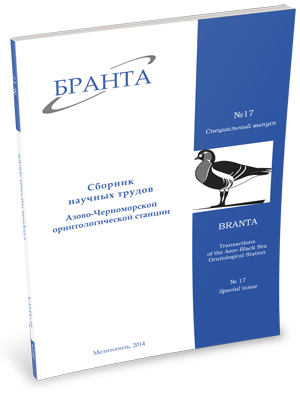
Transactions
of the Azov-Black Sea Ornithological Station



The study of bats by ultrasound detector in the zone of influence of wind farms in Ukrainian Azov region
A. M. Volokh, V. D. Siokhin, I. K. Polishchuk, P. I. Gorlov
In 2011-2012 in the Ukrainian Azov region the research of bats was carried out to assess the potential impact on them from the future wind farm. 1686 individuals of 5 species were counted with the help of an ultrasound Detector detector, the most numerous were Pipistrellus kuhlii (74,9%); Nyctalus noctula (12.3%) and Eptesicus serotinus (8.9%). Most of the bats were founded above the shelterbelts (39.4%), on the shores of the Sea of Azov (34.2%) and in the villages (11.9%). The average intensity of their flight for 10 minutes was minimal over the garden (1.8 ± 0.23), and the maximum along the coast (20.2 ± 3.16 individuals). The main flow of migration took place between villages Oleksandrivka in the north and Stepanivka-I in the south, where 32.6% of the animals were taken into account. The average number of bats was 3.9 ± 0.32 individuals/10 min. with a minimum of 1.8 ± 0.14 in July and a maximum of 6.3 ± 0.82 in August. Generally, a small number of bats fly through the wind farm during the year. Their migratory routes look like as narrow strips. The most powerful of these strips runs along the coast of the Azov Sea.
Read the paper in a PDF file